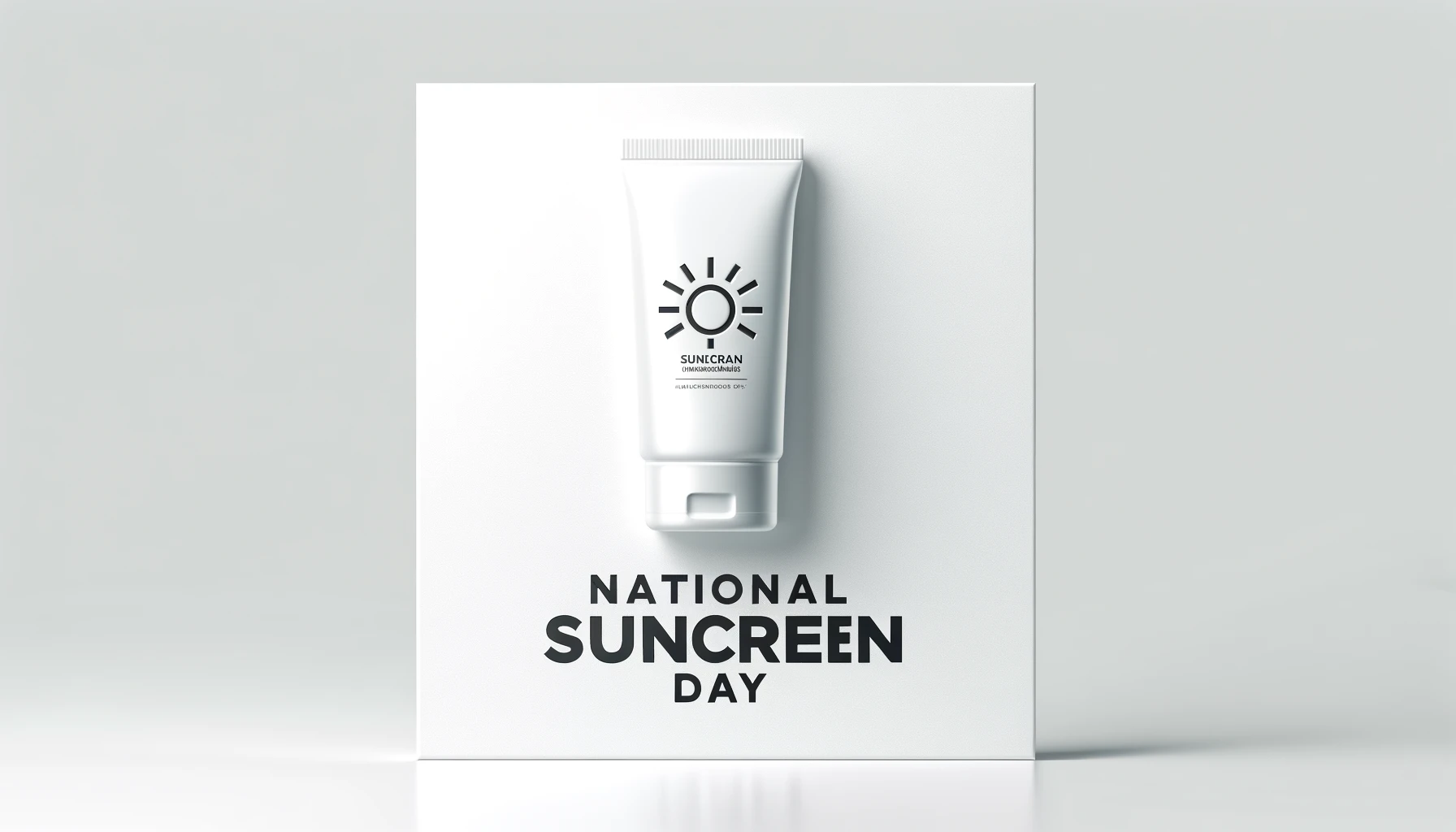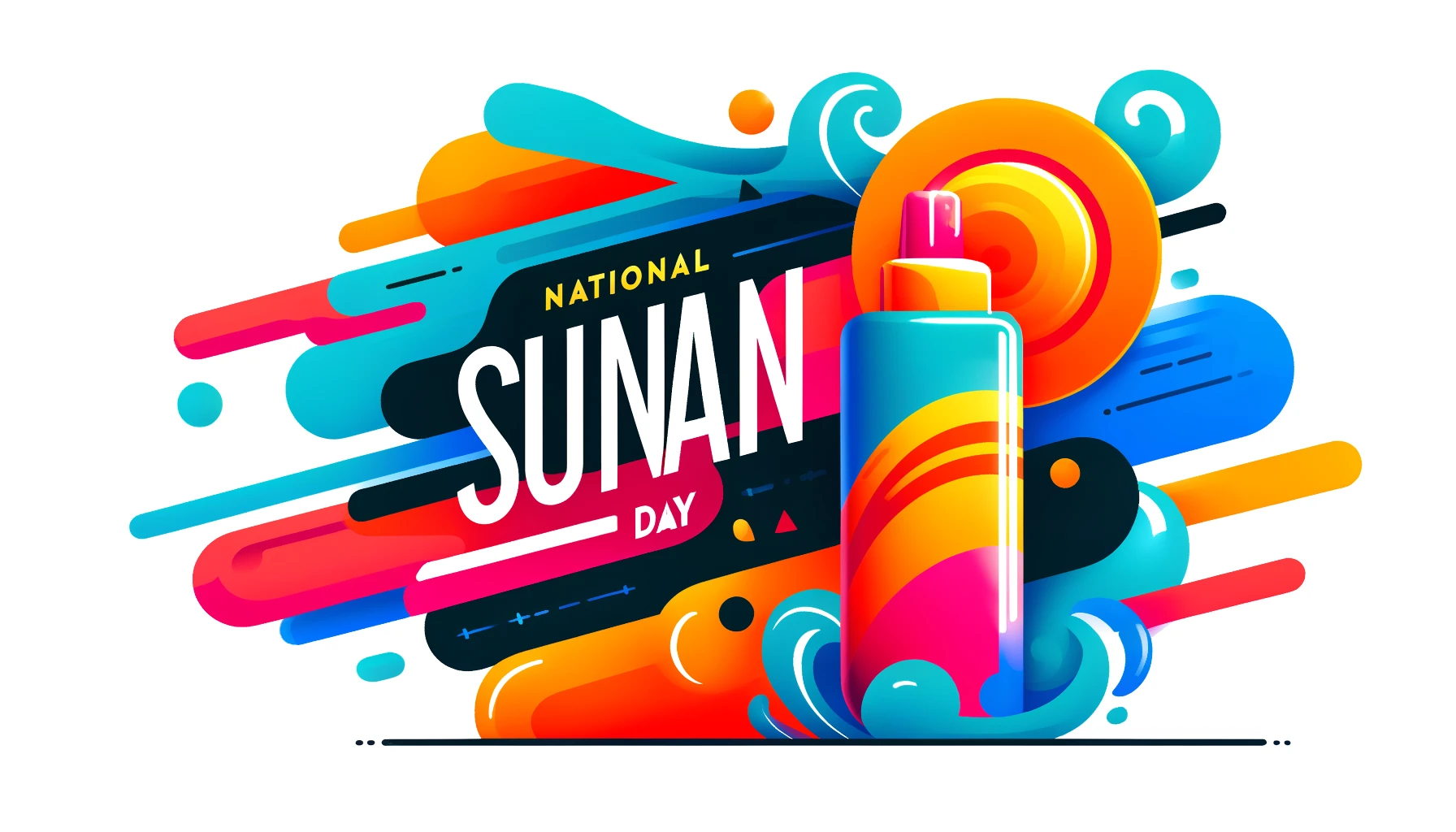Observed annually on May 27th, National Sunscreen Day emphasizes the crucial role of sunscreen in protecting our skin from the harmful effects of ultraviolet (UV) radiation. As skin cancer rates continue to rise, this day serves as a vital reminder to prioritize sun safety and educate ourselves on the best practices for skin protection.
Starting with a compelling statistic: according to the American Cancer Society, more than 5 million cases of skin cancer are diagnosed in the United States each year. This makes it the most common form of cancer in the country. By observing National Sunscreen Day, we can raise awareness and promote habits that significantly reduce the risk of skin cancer.
The Importance of Sunscreen: Understanding UV Radiation
UV radiation from the sun is a major cause of skin damage. There are two primary types of UV rays that affect our skin: UVA and UVB. UVA rays penetrate deeply into the skin and are responsible for premature aging and wrinkling, while UVB rays cause sunburn and can directly damage the DNA in our skin cells, leading to skin cancer.
Using sunscreen regularly can mitigate these harmful effects. Sunscreen acts as a barrier, absorbing or reflecting UV radiation and preventing it from penetrating the skin. By incorporating sunscreen into our daily routine, we can protect ourselves from both immediate and long-term damage caused by sun exposure.
Choosing the Right Sunscreen: Types and SPF Ratings
When it comes to selecting a sunscreen, it’s essential to understand the differences between chemical and physical sunscreens. Chemical sunscreens absorb UV radiation, converting it into heat that is then released from the skin. In contrast, physical sunscreens contain mineral ingredients like zinc oxide or titanium dioxide, which sit on the skin’s surface and reflect UV rays.
The Sun Protection Factor (SPF) rating is another crucial factor. SPF measures the level of protection a sunscreen provides against UVB rays. Dermatologists recommend using a broad-spectrum sunscreen with an SPF of at least 30, which blocks 97% of UVB rays. Higher SPF ratings offer slightly more protection, but no sunscreen can block 100% of UV rays. It’s also important to check the ingredients for safety and effectiveness, avoiding harmful additives like oxybenzone and octinoxate.
How to Apply Sunscreen Properly: Tips and Techniques
Proper application of sunscreen is key to ensuring optimal protection. To begin, apply a generous amount of sunscreen to all exposed skin, about one ounce (a shot glass full) for the entire body. Pay special attention to commonly missed areas such as the ears, back of the neck, tops of feet, and along the hairline.
Reapply sunscreen every two hours, or more frequently if you are swimming or sweating. Water-resistant sunscreens are ideal for these activities, but they still need reapplication every 40 to 80 minutes, depending on the product’s label. For everyday use, consider integrating sunscreen into your skincare routine, applying it under makeup and choosing products suitable for your skin type, including those designed for sensitive skin or children.
Myths and Facts about Sunscreen: Debunking Common Misconceptions
There are many myths about sunscreen that can lead to improper usage. One common misconception is that sunscreen is only necessary on sunny days. In reality, UV rays can penetrate clouds and cause damage even on overcast days. Another myth is that a higher SPF eliminates the need for reapplication. Regardless of SPF, sunscreen must be reapplied regularly to maintain its effectiveness.
Additionally, some believe that people with darker skin tones do not need sunscreen. While melanin provides some natural protection, it is not sufficient to prevent UV damage. Everyone, regardless of skin color, should use sunscreen to protect against skin cancer and other forms of sun damage.
The Broader Impact of National Sunscreen Day: Raising Awareness
National Sunscreen Day plays a significant role in raising awareness about the importance of sun protection. This day encourages communities to participate in events and initiatives that promote skin cancer prevention. Educational campaigns and local activities help spread crucial information on the benefits of using sunscreen and adopting sun-safe behaviors.
Sharing personal stories or testimonials can have a powerful impact. Hearing from individuals affected by skin cancer or those who have successfully integrated sun protection into their lives can motivate others to take action. These stories highlight the importance of vigilance and proactive measures in maintaining skin health.
Fun in the Sun: Enjoying Outdoor Activities Safely
Outdoor activities are a great way to enjoy the sun, but it’s important to stay protected. Wearing hats, sunglasses, and protective clothing can provide additional barriers against UV rays. Seeking shade during peak sun hours, typically between 10 a.m. and 4 p.m., also helps reduce exposure.
There are plenty of ways to enjoy the outdoors safely. Consider sun-safe activities such as picnics under a shaded area, beach trips with umbrellas, or hiking with UV-protective gear. Staying hydrated is equally important, as it helps maintain overall health and skin moisture, preventing sunburn and heat-related illnesses.
Conclusion: Embrace Sun Safety
National Sunscreen Day is a crucial reminder of the importance of protecting our skin from harmful UV radiation. By making sunscreen a daily habit, participating in awareness activities, and embracing sun-safe behaviors, we can significantly reduce the risk of skin cancer and other sun-related health issues.
10 Interesting Facts about National Sunscreen Day:
- National Sunscreen Day is observed annually on May 27th to promote sun safety and skin cancer awareness.
- The day encourages everyone to incorporate sunscreen into their daily routines, regardless of the weather.
- UV radiation from the sun is the leading cause of skin cancer, making sunscreen a vital preventive measure.
- Sunscreens come in two main types: chemical, which absorbs UV rays, and physical, which reflects them.
- An SPF of 30 or higher is recommended for effective protection against UVB rays.
- Sunscreen should be reapplied every two hours, and more frequently if swimming or sweating.
- Even on cloudy days, up to 80% of UV rays can penetrate the skin, emphasizing the need for daily sunscreen use.
- People with darker skin tones are still at risk of UV damage and should use sunscreen regularly.
- National Sunscreen Day also highlights the importance of protective clothing, hats, and sunglasses.
- Educational events and community activities on this day aim to spread awareness and encourage sun-safe habits.












Celebrating National Sunscreen Day with great tips and insights. Protect your skin!
Skin protection awareness
Very helpful!
National Sunscreen Day is such a relevant topic. This article provides great reminders to take care of our skin.
National Sunscreen Day is important for skin health. This piece captures the significance and tips for protecting your skin well. Thanks for the informative read!
The page about National Sunscreen Day is very informative and engaging. It offers a detailed look at the importance and significance of sunscreen, along with some interesting facts and ways to celebrate. The information is well-organized and easy to read, making it a pleasure to navigate. This site is a fantastic resource for anyone wanting to learn more about National Sunscreen Day.